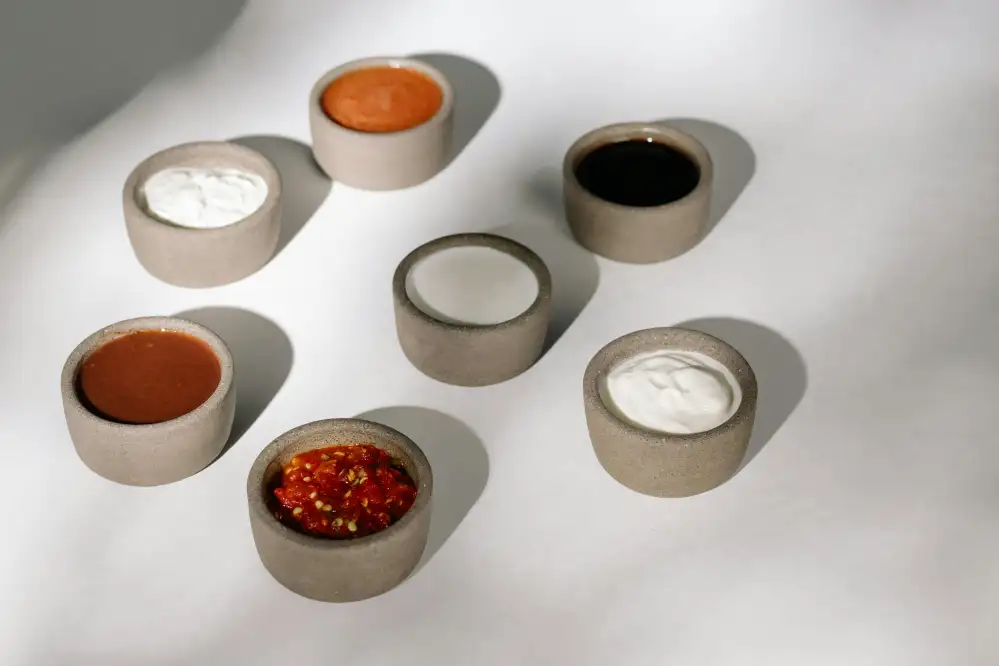Bordelaise Sauce: Elevate Your Culinary Skills with this Classic French Recipe!

Introduction to Bordelaise Sauce
Bordelaise sauce is a classic French sauce that adds depth and richness to any dish. Originating from the Bordeaux region of France, this sauce is known for its robust flavor and velvety texture. It is traditionally made with red wine, shallots, bone marrow, and herbs, creating a savory and indulgent taste.
The name "bordelaise" comes from the French word "Bordeaux," which refers to the famous wine produced in the region. This sauce was originally created to complement the rich flavors of Bordeaux wines, making it a perfect pairing for beef dishes.
With its complex flavors and elegant presentation, bordelaise sauce has become a staple in French cuisine. Its versatility allows it to be used as a base for other sauces or as a standalone accompaniment to grilled meats, roasted vegetables, or even pasta dishes.
In this article, we will explore the ingredients needed and step-by-step instructions on how to make bordelaise sauce. We will also provide tips and tricks for perfecting this classic recipe and discuss serving suggestions and pairing options. Additionally, we will delve into variations and adaptations of bordelaise sauce as well as highlight its potential health benefits. So let's dive into the world of culinary delights with bordelaise sauce!
Ingredients needed for bordelaise sauce
To make bordelaise sauce, you will need the following ingredients:
- 2 cups of red wine (preferably Bordeaux or Cabernet Sauvignon)
- 1 cup of beef or veal stock
- 1 small onion, finely chopped
- 2 cloves of garlic, minced
- 2 tablespoons of butter
- 2 tablespoons of all-purpose flour
- Fresh thyme sprigs
- Salt and pepper to taste
These ingredients are essential for creating the rich and flavorful base of bordelaise sauce. Make sure to use a good quality red wine as it plays a crucial role in enhancing the taste. The beef or veal stock adds depth and richness to the sauce, while the onion and garlic provide aromatic flavors. Butter and flour are used to create a roux, which thickens the sauce. Finally, fresh thyme sprigs add a subtle herbaceous note. With these ingredients on hand, you'll be ready to embark on your culinary journey with bordelaise sauce!
Step-by-step instructions on how to make bordelaise sauce
1. Start by finely chopping 1 shallot and mincing 2 cloves of garlic.
2. In a saucepan, melt 2 tablespoons of butter over medium heat.
3. Add the chopped shallot and minced garlic to the pan and sauté until they become translucent.
4. Pour in 1 cup of red wine, preferably a dry Bordeaux or Cabernet Sauvignon, and bring it to a simmer.
5. Allow the wine to reduce by half, which will take about 10 minutes.
6. Next, add 1 cup of beef or veal stock to the pan and continue simmering for another 10 minutes.
7. Meanwhile, in a separate small bowl, mix together 1 tablespoon of all-purpose flour with 1 tablespoon of cold water until it forms a smooth paste.
8. Slowly whisk the flour-water mixture into the saucepan, stirring continuously to avoid any lumps from forming.
9. Continue cooking the sauce for an additional 5 minutes until it thickens slightly.
10. Season with salt and pepper to taste.
11. Remove from heat and strain the sauce through a fine-mesh sieve to remove any solids.
12. Finally, stir in 2 tablespoons of fresh chopped parsley for added flavor.
Now you have successfully made bordelaise sauce! It's ready to be served or used as a delicious accompaniment to your favorite dishes.
Tips and tricks for perfecting bordelaise sauce
1. Use a good quality red wine: The key to a flavorful bordelaise sauce is using a rich and full-bodied red wine, such as Cabernet Sauvignon or Merlot. Avoid using cheap or low-quality wines as they can affect the taste of the sauce.
2. Reduce the wine properly: To intensify the flavors of the wine, it's important to reduce it before adding other ingredients. Simmer the wine over medium heat until it has reduced by about half. This will concentrate its flavors and give your sauce a more robust taste.
3. Choose high-quality beef stock: The beef stock forms the base of the bordelaise sauce, so it's crucial to use a high-quality stock for depth of flavor. If possible, make your own homemade beef stock or use a store-bought one that is rich and flavorful.
4. Strain the sauce: After simmering all the ingredients together, strain the sauce through a fine-mesh sieve to remove any solids or lumps. This will result in a smooth and velvety texture.
5. Incorporate butter at the end: To add richness and shine to your bordelaise sauce, whisk in cold butter cubes at the end of cooking. This technique is called "monté au beurre" and gives the sauce a luxurious finish.
6. Adjust seasoning carefully: Taste your bordelaise sauce before serving and adjust the seasoning accordingly. Add salt and pepper sparingly as you don't want to overpower the flavors of the wine and beef.
By following these tips, you can ensure that your bordelaise sauce turns out perfectly every time, with its signature deep flavor and silky texture that will elevate any dish it accompanies.
Serving suggestions and pairing options for bordelaise sauce
Bordelaise sauce is a versatile condiment that can elevate the flavors of various dishes. It pairs exceptionally well with grilled or roasted meats such as steak, lamb, and pork. The rich and savory flavors of the sauce complement the natural juices of the meat, creating a delightful combination.
For a classic French twist, serve bordelaise sauce alongside a perfectly cooked filet mignon or ribeye steak. The tender and juicy meat harmonizes beautifully with the robust flavors of the sauce. Additionally, roasted or grilled lamb chops coated in bordelaise sauce offer a delectable culinary experience.
If you prefer seafood, try serving bordelaise sauce with seared scallops or grilled shrimp. The complexity of the sauce adds depth to the delicate flavors of these seafood options.
Vegetarians can also enjoy bordelaise sauce by drizzling it over grilled vegetables like portobello mushrooms or eggplant. The earthy notes of the vegetables are enhanced by the umami-rich characteristics of the sauce.
To complete your meal, consider pairing bordelaise sauce with sides such as creamy mashed potatoes or roasted root vegetables. The creamy texture of potatoes balances out the boldness of the sauce while roasted vegetables add a touch of sweetness.
In summary, bordelaise sauce is a versatile accompaniment that enhances an array of dishes. Whether paired with meats, seafood, or vegetables, it adds depth and richness to any meal. Experiment with different combinations to discover your favorite culinary delight!
Variations and adaptations of bordelaise sauce
Variations and adaptations of bordelaise sauce offer endless possibilities to experiment with flavors. While the classic recipe calls for red wine, some chefs prefer using white wine or even port for a unique twist. Adding shallots, garlic, or herbs like thyme and rosemary can enhance the depth of flavor. For a richer version, incorporate bone marrow or demi-glace into the sauce. Those looking for a vegetarian option can substitute vegetable stock for beef stock. With these adaptations, bordelaise sauce can be customized to suit different palates and complement various dishes.
Health benefits of bordelaise sauce
Health Benefits of Bordelaise Sauce
While bordelaise sauce is known for its rich and indulgent flavors, it also offers some surprising health benefits. Here are a few reasons why incorporating this classic French sauce into your culinary repertoire can be beneficial for your well-being:
1. Nutrient-rich: Bordelaise sauce contains a variety of ingredients that are packed with essential nutrients. The base of the sauce is made from bone marrow, which is a great source of vitamins A and K2, as well as omega-3 fatty acids.
2. Heart-healthy: Red wine, one of the key components in bordelaise sauce, has been linked to heart health due to its high concentration of antioxidants such as resveratrol. These antioxidants help reduce inflammation and may lower the risk of cardiovascular diseases.
3. Immune-boosting: Garlic, another ingredient commonly found in bordelaise sauce, is known for its immune-boosting properties. It contains compounds like allicin that have antibacterial and antiviral effects, helping to strengthen your immune system.
4. Iron-rich: The addition of shallots in bordelaise sauce provides a good amount of iron. Iron is essential for the production of red blood cells and helps prevent anemia.
5. Anti-inflammatory properties: The herbs and spices used in bordelaise sauce, such as thyme and black pepper, contain anti-inflammatory compounds that can help reduce inflammation in the body.
It's important to note that while bordelaise sauce does offer some health benefits, it should still be consumed in moderation due to its high fat content. Pairing it with nutrient-dense foods like lean proteins and vegetables can help create a balanced meal.
Incorporating bordelaise sauce into your cooking not only elevates the flavors of your dishes but also adds a touch of nutritional value. So go ahead and indulge in this classic French recipe while reaping its health benefits!
In conclusion, bordelaise sauce is a classic French recipe that can elevate your culinary skills and add a touch of sophistication to any dish. Its rich and robust flavors, derived from red wine and bone marrow, make it a perfect accompaniment for grilled meats and roasted vegetables.
Mastering the art of making bordelaise sauce requires attention to detail and patience. The key lies in reducing the wine to concentrate its flavors and achieving the perfect balance between acidity and richness. By following the step-by-step instructions and incorporating some tips and tricks, you can create a velvety smooth sauce that will impress your guests.
When serving bordelaise sauce, consider pairing it with beef tenderloin, lamb chops, or even roasted mushrooms for a vegetarian option. The sauce adds depth and complexity to these dishes, enhancing their natural flavors. Additionally, you can experiment with variations by adding herbs like thyme or rosemary or substituting the red wine with white wine for a different twist.
While bordelaise sauce is undeniably delicious, it's important to note that it should be consumed in moderation due to its high fat content. However, it does offer some health benefits as well. Red wine used in the sauce contains antioxidants that may help reduce inflammation and promote heart health when consumed in moderation.
In conclusion, mastering bordelaise sauce will not only elevate your culinary skills but also impress your guests with its rich flavors. So go ahead and give this classic French recipe a try – your taste buds will thank you!
Published: 10. 02. 2024
Category: Recipes



